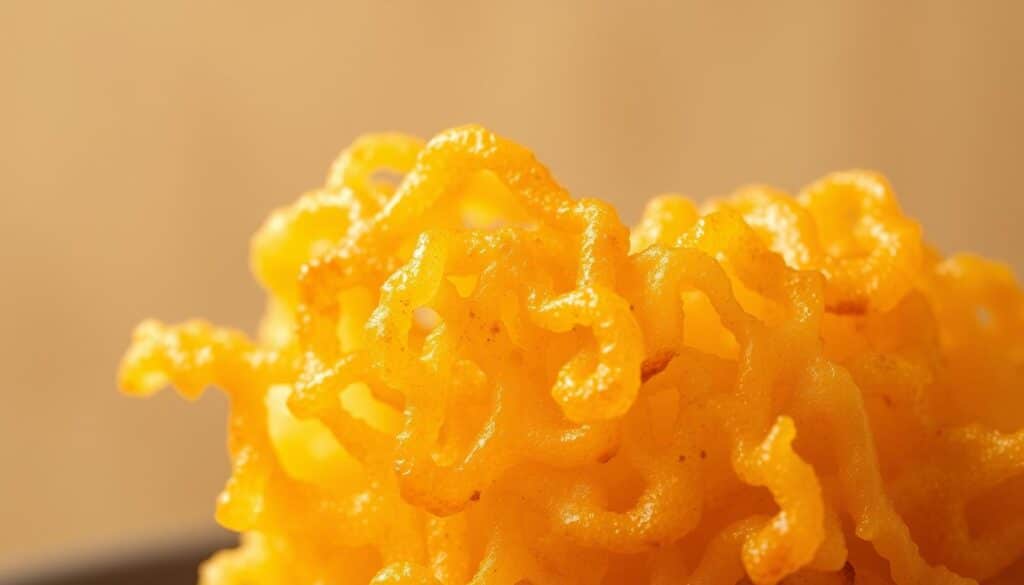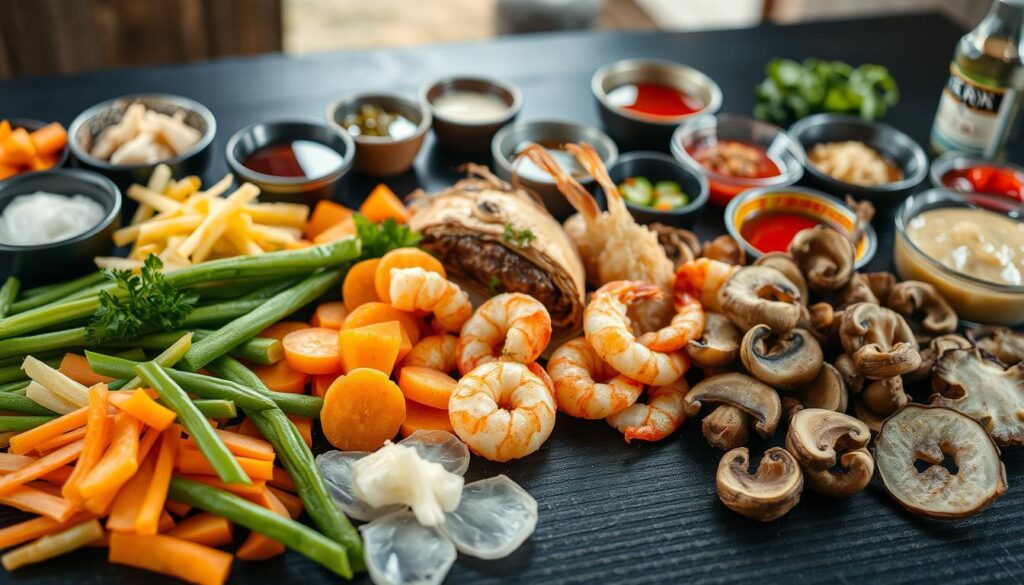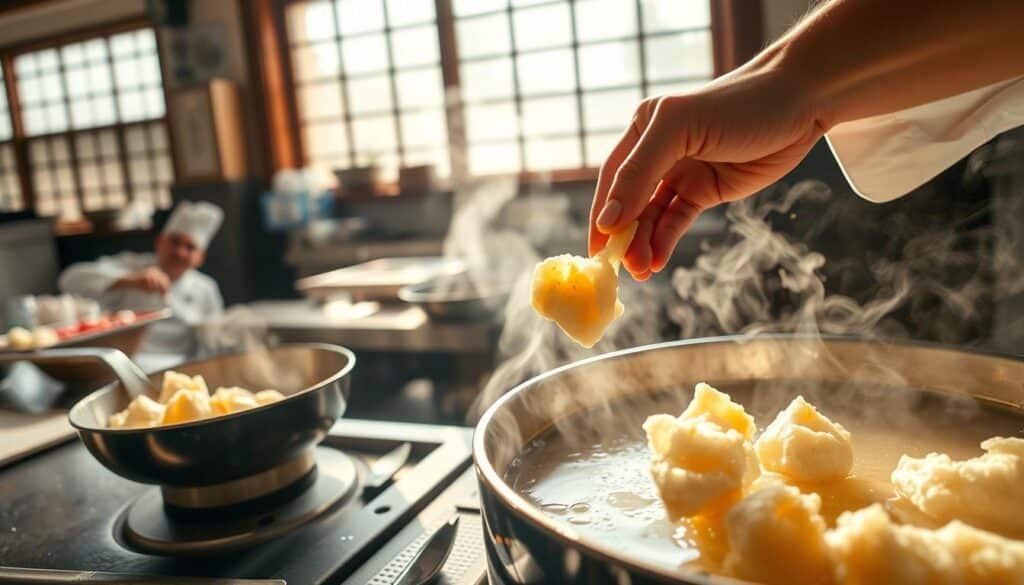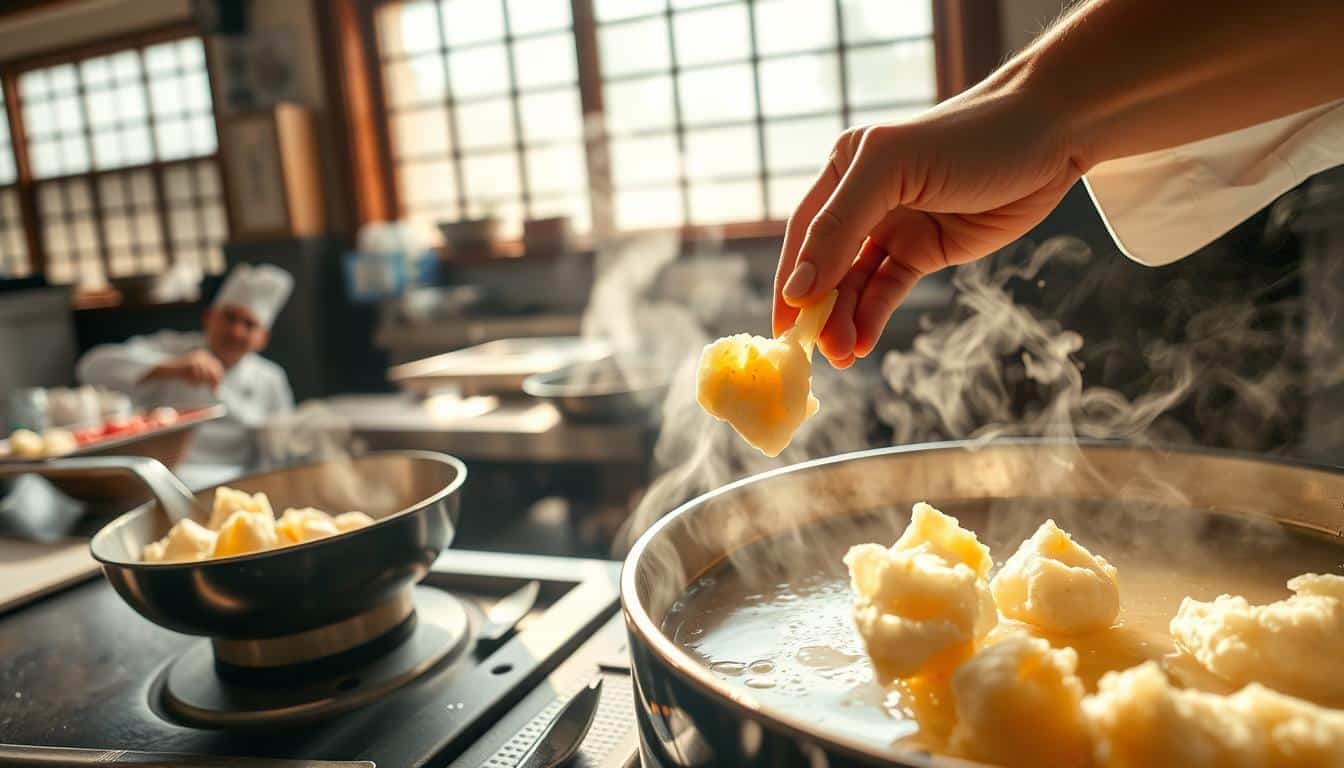There’s something magical about the first bite of tempura—light, airy, and full of flavor. For me, it’s more than just a dish; it’s an art form that brings people together. Originating in Japan, tempura has won my heart with its delicate balance of crispy batter and tender ingredients, whether it’s shrimp or vegetables.
Thank you for reading this post, don't forget to subscribe!This article dives into the essentials of crafting perfect tempura. We’ll explore the key ingredients, from fresh veggies and seafood to the secret of a flawless batter. You’ll learn crucial tips like keeping the batter chilled and avoiding overmixing for that ideal texture. Drawing from experts like Tim Anderson and Namiko Hirasawa Chen, we’ll cover temperature control and frying techniques to ensure your tempura turns out golden and delicious every time.
By the end of this guide, you’ll be equipped with the recipes and tricks to master tempura in your own kitchen. Let’s embark on this culinary journey together and uncover the simple yet precise methods behind this beloved dish.

Key Takeaways
- Master the art of tempura with light, crispy batter and tender ingredients.
- Discover essential ingredients and expert tips for perfect texture.
- Learn temperature control and frying techniques from culinary experts.
- Keep your batter cold and avoid overmixing for optimal results.
- Explore simple, precise methods to create delicious tempura at home.
Understanding Tempura: Breaded and Fried Vegetables or Seafood.
Tempura stands out as a unique frying technique that combines the crunch of a light batter with the vibrant flavors of fresh ingredients. Unlike other fried dishes, tempura relies on a delicate balance of hot oil and a specially prepared batter to create its signature crisp texture.
What Makes Tempura Unique?
The magic of tempura lies in its batter—a mixture of flour, egg, and ice-cold water. This batter is intentionally left lumpy to ensure the final texture remains airy and light. When ingredients like shrimp or vegetables are dipped into this batter and then fried in hot oil, the result is a golden, crispy exterior giving way to tender, flavorful insides.
Essential Ingredients and Tools
| Ingredient/Tool | Importance | Tip |
|---|---|---|
| All-purpose flour | Provides structure to the batter | Use cold flour for better texture |
| Egg | Bind ingredients without heaviness | Beat lightly to avoid dense batter |
| Ice water | Prevents gluten formation | Keep water icy cold |
| Thermometer | Maintains optimal frying temperature | Aim for 375°F |
Historical and Cultural Insights
Originating in Japan, tempura has a rich history dating back to the 16th century. It was introduced by Portuguese missionaries and quickly became a staple in Japanese cuisine. Today, tempura is enjoyed worldwide, with restaurants perfecting the art of frying to achieve the perfect balance of crunch and flavor.

Mastering the Tempura Batter and Frying Techniques
Creating the perfect tempura batter and executing flawless frying techniques are essential for achieving that coveted crispy exterior and tender interior. It all begins with understanding how to prepare and handle the batter, as well as mastering the frying process.
Keeping the Batter Cold and Lumpy
A light and crispy batter is the heart of great tempura. To achieve this, it’s crucial to keep your ingredients cold. Use ice-cold water and refrigerated eggs to prevent the gluten in the flour from activating, which would make the batter dense. Mix the batter just until the ingredients are combined, leaving small lumps for an airy texture. Overmixing can lead to a heavy, less crispy result.
| Tip | Importance | Details |
|---|---|---|
| Use cold ingredients | Prevents gluten activation | Ensures a light batter |
| Don’t overmix | Maintains airiness | Leaves lumps for crispness |
| Chill the batter | Enhances texture | Keeps batter fresh longer |
Temperature Guidelines and Frying Tips
Heat your oil to the ideal temperature of 320-350°F. Use a thermometer to maintain this range for consistent results. When frying, avoid overcrowding the pot—fry in batches to keep the oil temperature steady. Cook vegetables for 3-4 minutes and seafood for about 2 minutes, adjusting as needed based on the ingredient’s thickness.

For more detailed guidance, check out this batter recipe and explore a delicious Cajun shrimp alfredo for inspiration.
Elevating Your Tempura Experience: Recipes and Serving Ideas
Ready to take your tempura game to the next level? Let’s dive into some exciting recipes and expert serving tips that will make your dishes stand out. Whether you’re a fan of crispy vegetables or succulent seafood, these ideas will help you create a memorable dining experience.
Vegetable Tempura Variations
Japanese sweet potato and kabocha squash are perfect for tempura. Slice them thinly and fry until golden. For a unique twist, try eggplant, mushrooms, or lotus root. The key is to keep slices uniform for even cooking.
Seafood Tempura Delicacies
Shrimp and white fish shine in tempura. Pat dry before coating for a light batter. Fry at 350°F for 2-3 minutes until golden. This enhances their natural flavors without overpowering them.
Creative Dipping Sauces and Presentation Tips
Ponzu tsuyu, made with soy sauce, mirin, and dashi, offers a tangy, umami-rich dip. For presentation, serve tempura on a paper-lined plate with grated daikon and a side of ponzu. Keep batches warm in a preheated oven at 200°F to maintain crispiness.
| Ingredient | Measurement | Cooking Time |
|---|---|---|
| Japanese Sweet Potato | 1 large, thinly sliced | 3-4 minutes |
| Shrimp | 7 large, peeled | 2-3 minutes |
| Kabocha Squash | ½ medium, cubed | 3-4 minutes |
For more inspiration, check out this delicious banana bread recipe for a sweet treat after your tempura meal. Pair your tempura with complementary sides like steamed rice or miso soup for a balanced, flavorful meal.
Conclusion
As you embark on your tempura journey, remember that it’s all about balance—between a light, crispy batter and tender ingredients. Whether you’re working with delicate shrimp or vibrant vegetables, the key lies in maintaining the right oil temperature and handling the batter with care.
Achieving perfect tempura starts with a cold, lumpy batter and oil heated to around 350°F. Avoid overmixing to keep the batter airy, and fry in batches to prevent the oil temperature from dropping. These small details make a big difference in the final texture.
Experiment with various ingredients to find your favorites. Shrimp and vegetables like sweet potatoes or lotus root are great starting points. Don’t be afraid to tweak recipes to your taste—tempura is all about creativity and enjoyment.
For an authentic experience, serve your tempura with a dipping sauce made from soy sauce, mirin, and dashi. Keep your tempura crispy by placing it on a paper-lined rack. Each bite should be a delightful mix of flavors and textures.
If you’re looking for more guidance, check out this resource for mastering the tempura batter. It’s packed with tips to help you achieve that perfect crisp every time.
Remember, mastering tempura is a journey, not a destination. It’s about the joy of cooking, the satisfaction of creating something delicious, and the happiness of sharing it with others. So don’t be discouraged by initial mishaps—every batch is a step closer to perfection. Enjoy the process, and let the crispy, golden results bring you as much joy as they bring your taste buds!
FAQ
What is the best type of flour to use for tempura batter?
All-purpose flour is the most commonly used flour for tempura batter because it provides the right balance of strength and lightness. Some recipes also include a small amount of cornstarch or rice flour for extra crispiness.
How important is the temperature of the oil when frying tempura?
The oil temperature is crucial for achieving the perfect tempura. The ideal temperature is between 320°F and 350°F (160°C to 175°C). If the oil is too hot, the outside will burn before the inside cooks. If it’s too cold, the tempura will absorb excess oil and become greasy. Use a thermometer to monitor the heat accurately.
Can I make tempura batter without eggs?
Yes, you can make tempura batter without eggs. A traditional tempura batter is typically made with just flour, water, and a pinch of salt. Eggs are sometimes added for extra richness, but they are not essential. For a lighter texture, stick to the basic ingredients.
Why should I not overmix the tempura batter?
Overmixing the batter develops the gluten in the flour, which can make the tempura dense and chewy instead of light and crispy. Stop mixing as soon as the ingredients are combined, and leave some lumps in the batter for the best results.
What is the purpose of using ice-cold water in the batter?
Ice-cold water helps keep the batter cold, which prevents the gluten from developing and ensures the tempura stays light and airy. It also helps create a better texture when frying.
Can I reuse the oil after frying tempura?
Yes, you can reuse the oil, but it’s important to strain it first to remove any food particles. Let the oil cool, then filter it through a fine-mesh sieve or cheesecloth. Store it in an airtight container for future use. Avoid using oil that has a dark color or a strong smell, as it may affect the taste of your next dish.
How do I prevent the tempura from sticking together in the oil?
To prevent tempura pieces from sticking together, make sure the oil is at the right temperature and fry in small batches. Gently separate the pieces with a slotted spoon as soon as they hit the oil. This ensures even cooking and prevents clumping.
What is the best way to serve tempura?
Tempura is best served immediately after frying while it’s still crispy. Serve it with a light dipping sauce made from soy sauce, mirin, and dashi for a traditional flavor. You can also garnish it with grated daikon radish or a sprinkle of salt for extra flavor.
Can I make tempura without a thermometer?
While a thermometer is recommended for precise temperature control, you can test the oil by dropping a small piece of batter into it. If it sizzles and rises to the surface quickly without burning, the oil is ready. If it sinks or smokes, adjust the heat accordingly.
How do I store leftover tempura to keep it crispy?
Let the tempura cool completely on a wire rack to allow excess oil to drain. Store it in an airtight container at room temperature for up to a day. To crisp it up again, bake it in a preheated oven at 300°F (150°C) for a few minutes before serving.
There are no reviews yet. Be the first one to write one.

